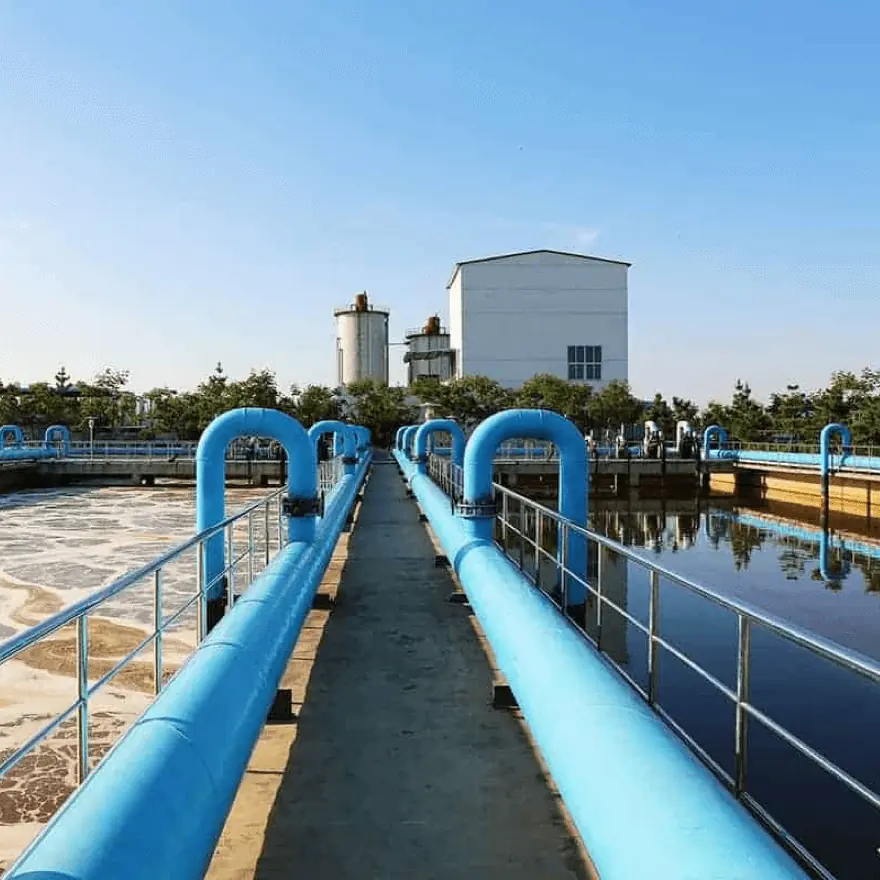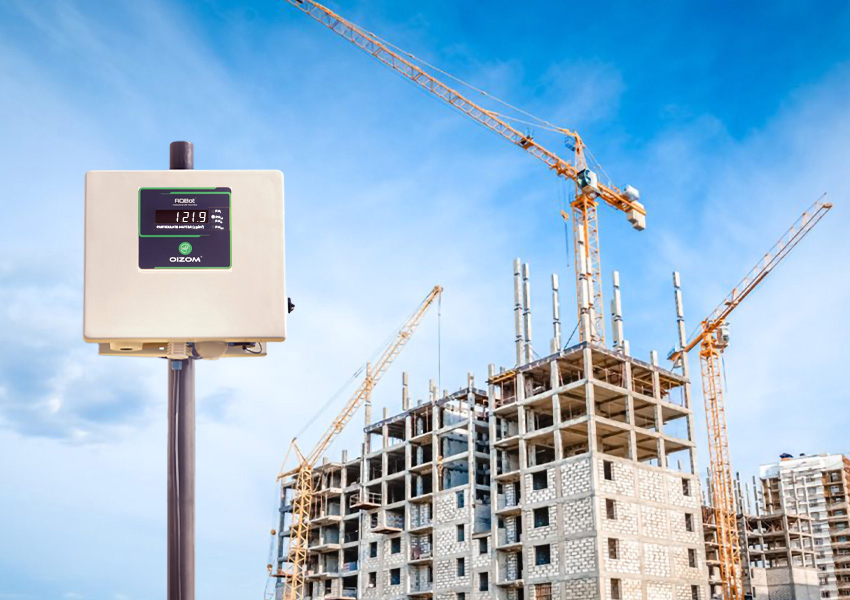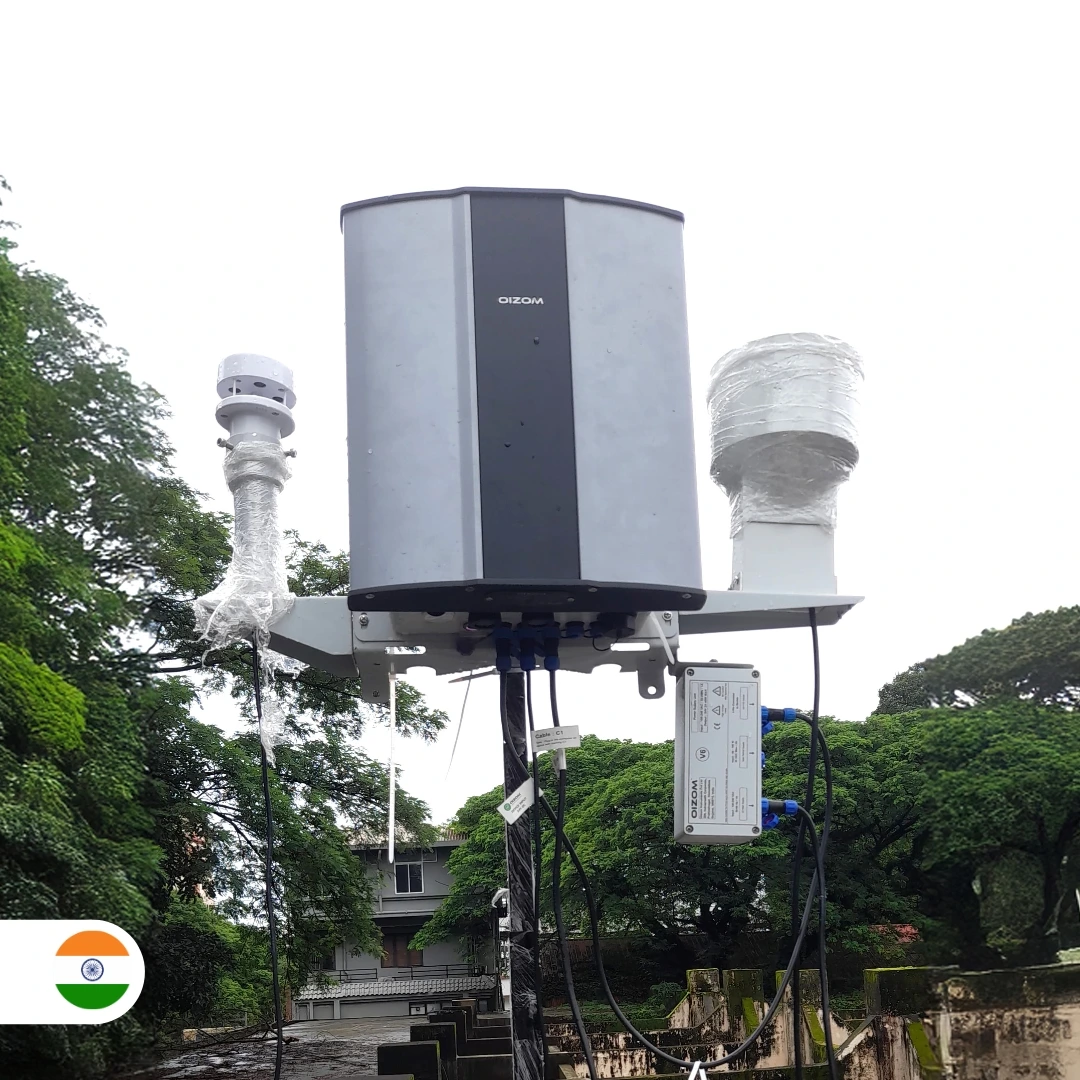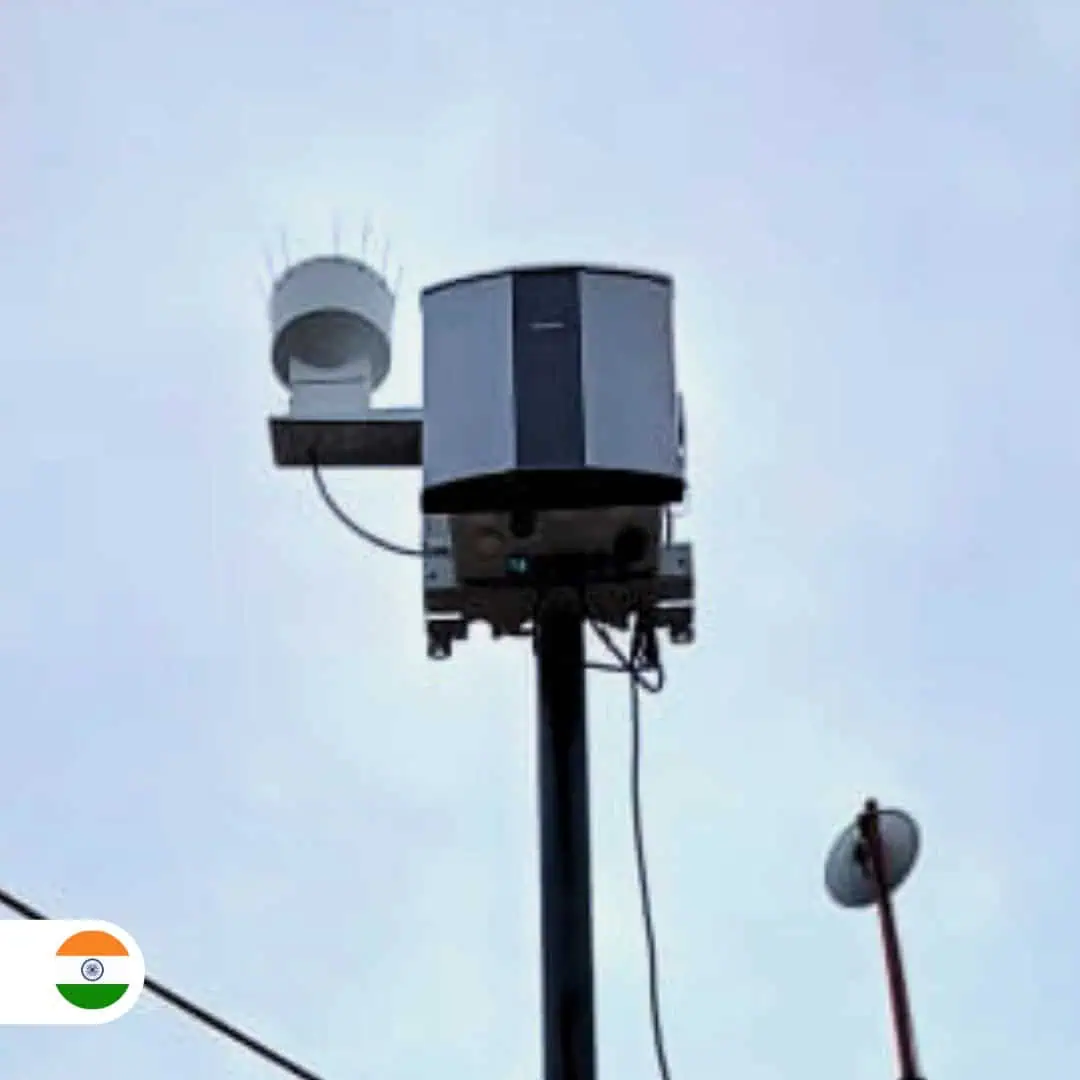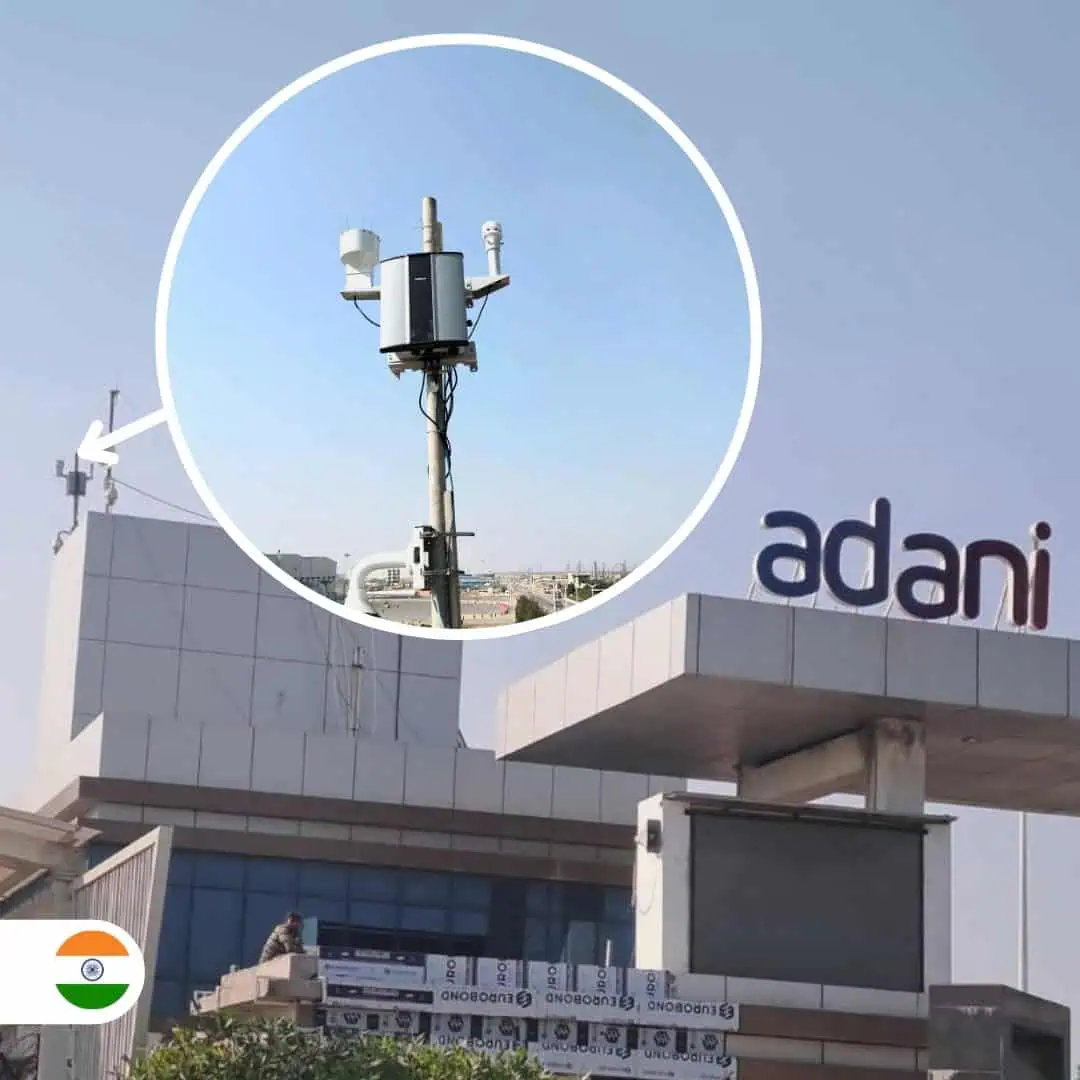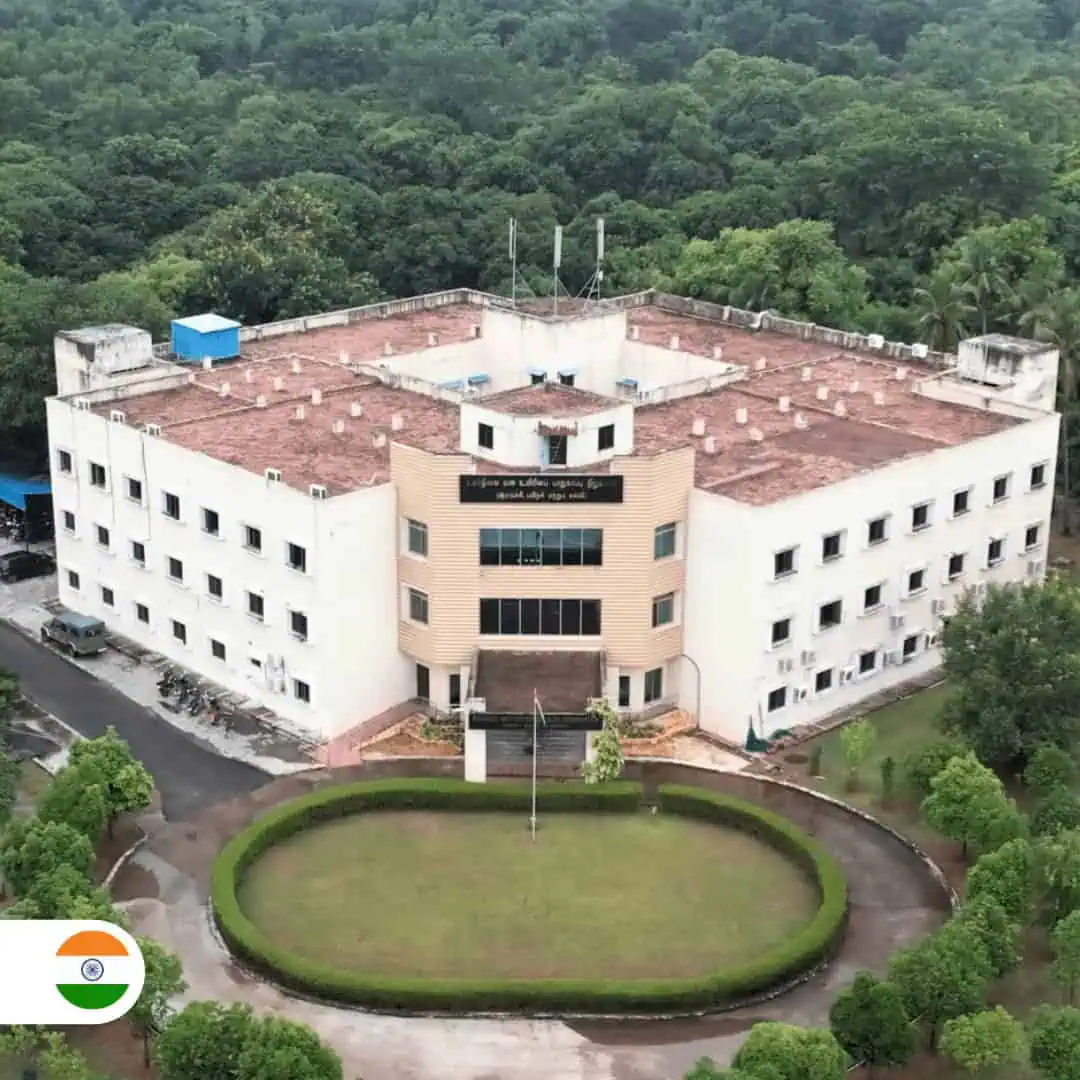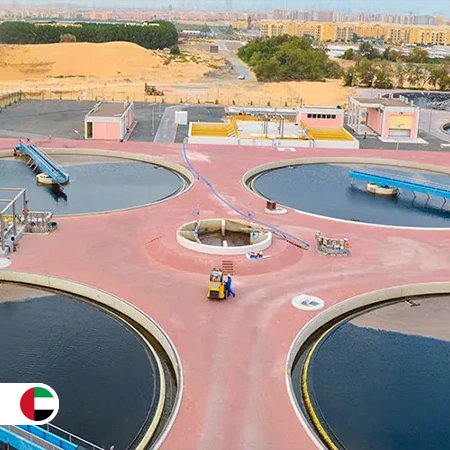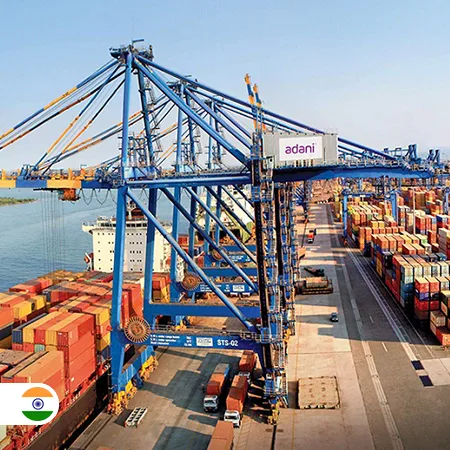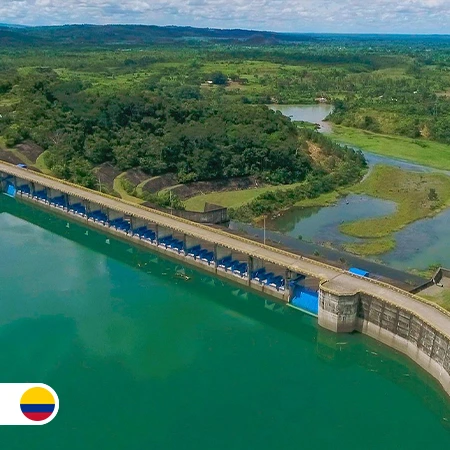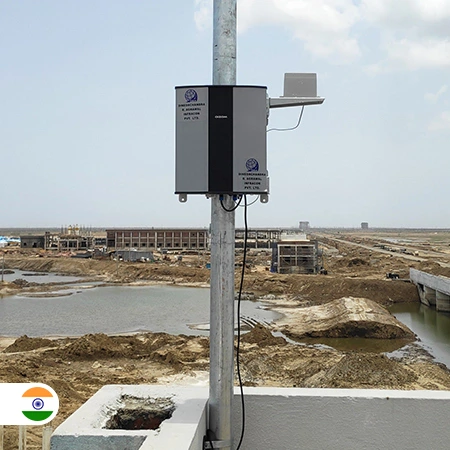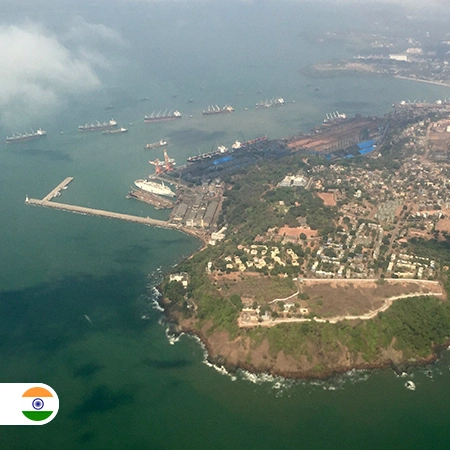Automatic Weather Station
An accurate automatic weather monitoring System to give you real-time weather insights.
Automatic Weather Station

Real-time Weather Station
Weathercom
In a world where timely meteorological data can be the difference between safety and catastrophe, Weathercom stands as a beam of innovation and reliability. As an Automatic Weather Station (AWS), Weathercom is not just an instrument but a lifeline for those in need of real-time, hyper-local weather parameters.
Consider an agricultural expert, reliant on accurate rain predictions, or a coastal town administrator monitoring wind speeds during a brewing storm. Strategizing mitigation action would be so handy for them, saving them from a significant loss.
With Weathercom’s wide array of measurements, from UV radiation to humidity, timely decisions aren’t just possible; they become the norm.
What are the Benefits of Using AWS?
Our dedication to blending convenience with technological expertise is evident in Weathercom’s easy installation and plug-and-play feature. Add to this a solar panel, and you have a system independent of conventional power sources. It is not just about gathering data but doing so with unerring precision, regardless of the circumstances.
Imagine a station in the heat of the Sahara or the cold of the Arctic, continuously providing accurate data unhindered by the environment. That’s the Weathercom promise – consistent, reliable, and undeterred meteorological monitoring.
Weathercom redefines durability and adaptability. Crafted from high-grade engineering-metal and composite polymers, it is built for longevity. And with features like over-the-air updates, there is no need for on-site visits, ensuring uninterrupted service.
A unique identity for each station guarantees precise data collection, while its weatherproof IP66 grade enclosure showcases its resilience.
For professionals and enthusiasts alike, Weathercom isn’t just another weather station; it is the epitome of meteorological excellence and the future of weather monitoring.
3500+ devices installed in over 80+ countries to monitor air quality with Oizom's smart environment monitoring solutions
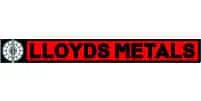

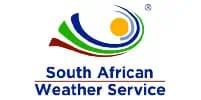

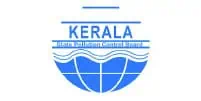
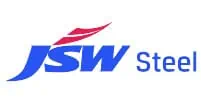

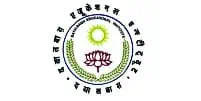
Product Features

Compact
Lightweight and compact system that can be easily installed on a pole or wall

Trusted by IMD and WMO
Trusted by leading meteorological organisations / bodies, such as the India Meteorological Department and the World Meteorological Organisation.

Network Agnostic
Supports a wide range of connectivity options like GSM / GPRS / WiFi / LoRa / NBIoT / Ethernet / Modbus / Relay / Satellite

Over-The-Air Update
Automatically upgradeable from a central server without any onsite visit

Internal Storage
Internal data storage capacity of up to 8 GB or 90 days
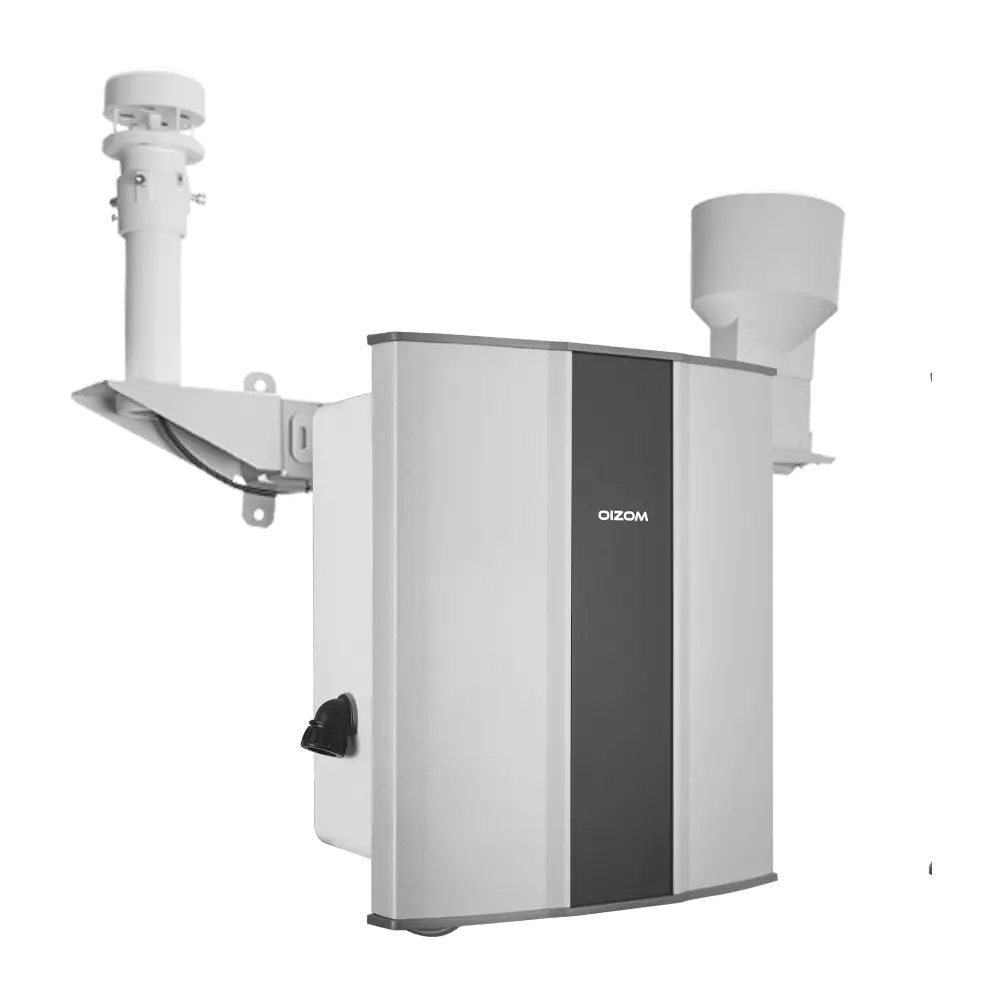
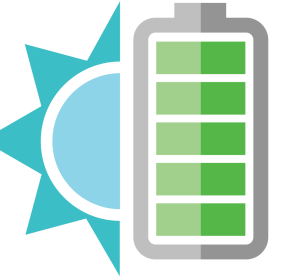
Solar Powered
The system works 100% on solar power, making it ideal for off-grid locations

Retrofit Design
Plug-and-play design for ease of implementation

Real-Time Data
Continuous monitoring and real-time data transfer at configurable intervals

Weather Resistant (IP66)
IP66 Grade (certified) enclosure for endurance against harsh weather conditions

Identity & Configuration
Geo-tagging allows you to get the exact location of the device, consisting of latitude and longitude coordinates
Noise Sensor: Our noise sensor, a capacitive microphone, transforms sound waves into electrical signals through capacitance variation caused by sound-induced diaphragm movement. Sound waves alter the diaphragm-backplate distance, thereby changing the microphone’s capacitance.
Light Intensity Measurement: Light sensors utilising photoconductivity are typically constructed using semiconductor materials. When light falls over the surface area, it converts it generates an electrical current. This current can be further processed, amplified, and used for various applications, such as light intensity measurement.
UV Index Measurement: UV sensors based on photoconductivity are sensitive to specific UV wavelengths determined by the bandgap of the semiconductor material used. When UV light of a specific wavelength falls on the semiconductor material, it interacts with the electrons present in the material. The energy carried by the UV photons can be sufficient to excite electrons from the valence band to the conduction band, this change is converted to a small measurable current amplified to make the output signal.
Temperature Measurement: The Sensor is based on the principle of RTD, where the resistance of the temperature sensing element changes with temperature, which is measured to determine the temperature. This sensor relies on a bandgap temperature sensor to detect the temperature-induced voltage changes in the semiconductor material. The sensor then converts these voltage changes into a temperature value.
Humidity Measurement: Our sensor uses the capacitance variation principle. It features a thin-film capacitive polymer that absorbs moisture, altering the dielectric constant and capacitance with humidity changes. The capacitance varies with the humidity level, and the sensor converts this capacitance change into a humidity reading.
Pressure Measurement: Our sensor works using the piezoresistive principle. It includes a microscopic sensing element that deforms under applied pressure, causing a change in electrical resistance. This change, known as the piezoresistive effect, is measured to determine atmospheric pressure. The material’s resistance changes proportionally as the air pressure changes, allowing the sensor to convert the pressure into an electrical signal.
Rain Sensor: Our rain sensor works on the tipping bucket principle. Rainwater, guided by a 200 cm² funnel, fills a self-emptying POM bucket. Upon tipping due to rainfall accumulation, it activates reed switches and resets, ready for subsequent rainfall measurement.
Wind Sensor: It is based on the measurement principle of Time-of-Flight. The sensor consists of transducers in a pair that alternates between emitting and receiving ultrasonic pulses. The corresponding transducer on the opposite side receives the pulse emitted by one transducer. The flight time is determined by measuring the time it takes for the ultrasonic pulse to travel from one transducer to the other.
- Wind Speed: The difference in time-of-flight between the two pairs of transducers gives the speed of the wind along the corresponding axes.
- Wind Direction: The relative difference in time-of-flight between the vertical and horizontal pairs of transducers is used to determine the wind direction.
Air Quality Data Monitored by Weathercom is also accessible using the Air Quality Software. The platform has essential features such as
- Air Quality Data Overview
- Micro-analysis Dashboard
- Historical Data Analytics
- Air Quality Report
- Smart Alerts
- Historical Data-set Download
Air Quality Data is also accessible using secured HTTP/MQTT APIs. In addition, the data can be published on Public displays, Smart TVs, Websites (using widgets), and Mobile Apps using the APIS.
Therefore, by building conditional algorithms and logic on the real-time air-quality data, environmental automation is possible.
Environmental.Ai platform can also generate a Live Air-Quality Map using the Dense Air-quality data network.
Product Applications
Do You Know You Can Fully Customize Your Weather Monitoring Station with Oizom?
Schedule a call with our team of experts and get a customised solution for your weather monitoring requirement.
Case Studies
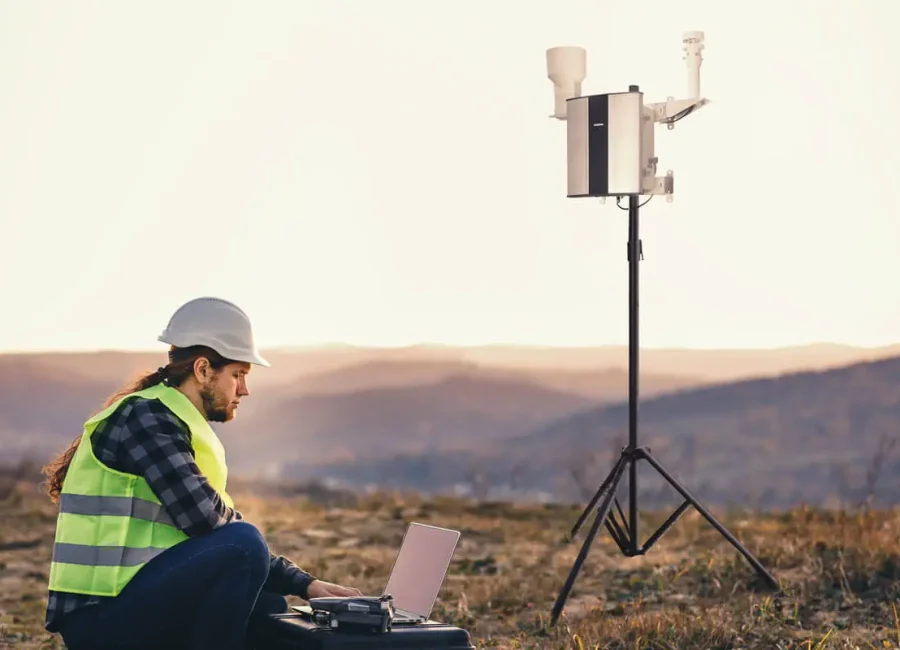
Changing the way we monitor air quality
Contact us to learn more about our air quality monitoring systems and solutions.
Changing The Way We Monitor Air Quality
Contact us to learn more about our air quality monitoring systems and solutions.
Automatic Weather Station Architecture
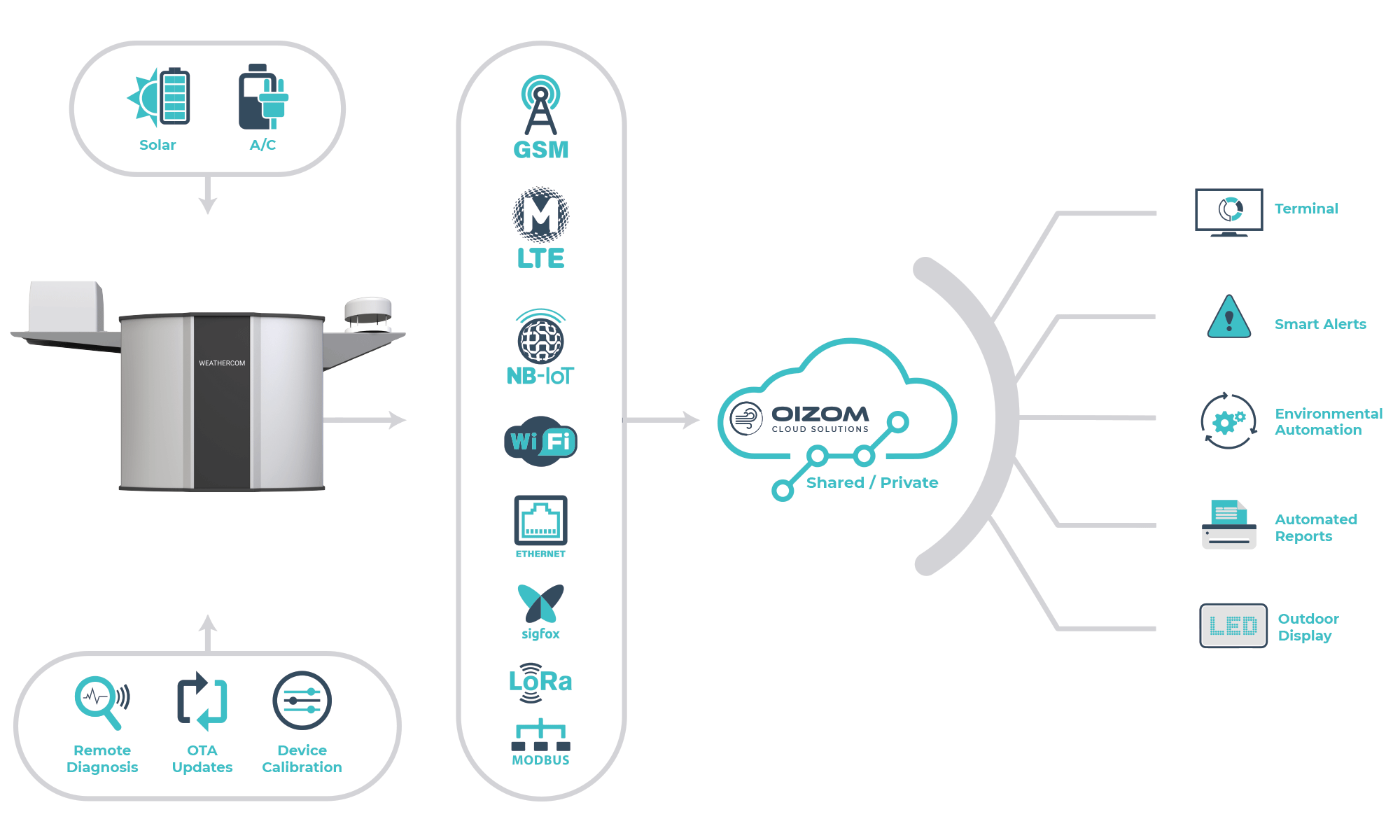
Weathercom is designed with a highly adaptable, ultra-modular approach, seamlessly integrating with any pre-existing infrastructure. It offers flexibility in power sources, functioning on both external AC/DC power and solar energy. For data transmission, Weathercom supports a variety of communication methods.
Wireless options include GSM, GPRS, 3G, WiFi, LORA, LTE, and SIGFOX, while Ethernet, Modbus, RS-485, and RS-283 are available for wired connections. Moreover, Weathercom’s capability extends to monitoring air quality data, which can be efficiently transmitted to the Oizom Cloud. This cloud service offers hosting on either Shared or Private Infrastructure, catering to diverse needs.
The data aggregated on Oizom Cloud is invaluable for various data solutions tailored to specific end applications. Users can engage with Weathercom data through Envizom, offering a comprehensive visualization experience.
The system also supports the publication of data on outdoor displays. One of the notable uses of Weathercom data is in generating detailed air pollution maps. Additionally, it plays a crucial role in the Command & Control Centre (CCC) of Smart Cities, where real-time data is vital. The system ensures secure data transmission to third-party applications through secure end-point APIs. Exploring the available case studies on air pollution is highly recommended for a deeper understanding of Weathercom’s applications and use cases.
Product Video
Weathercom Video explains everything you need to know about our range of Air Quality Monitoring Systems. In addition, you may watch the Weathercom Video to understand its Capabilities in terms of Parameters, Working Principles, Communication Protocols, Power Requirements, and Data accessibility. It’s a 2-minute 36 seconds video covering all the essential aspects of Ambient Air Quality Monitoring.
Weathercom FAQs
An AWS is a system that measures mеtеorological parameters such as wind speed and dirеction, rainfall, visibility, UV radiation, light intеnsity, tеmpеraturе, humidity, and prеssurе. It enables real-time monitoring of hypеr-local mеtеorological paramеtеrs for on-timе dеcision-making in cases of natural hazards.
AQBot is an industrial-gradе mеthanе (CH4) gas monitor using NDIR technology to mеasurе CH4 concеntration. It has an IP65 rugged compositе enclosure for weather endurance and rеal-timе data transfer and is lightwеight with еasy installation.
While specific types are not detailed in the provided source, AWS systems can vary based on the parameters they measure, durability, and connеctivity options. For еxamplе, Wеathеrcom is compact, durablе, and supports a variety of connеctivity options, including GSM, GPRS, WiFi, and morе.
AWS systems are used for real-time weather monitoring, forеcasting, and prеdictions. Thеy aid in timеly warnings/alеrt broadcasting, disastеr prеvеntion, and in making data-drivеn dеcisions in agriculturе, road safety, and port opеrations.
For pricеs as industrial nееds, it is rеcommеndеd to contact Oizom directly.
AWS systеms likе Wеathеrcom can be purchased from Oizom. It is advisable to contact thеm through their official wеbsitе or authorized distributors for purchasе information.











